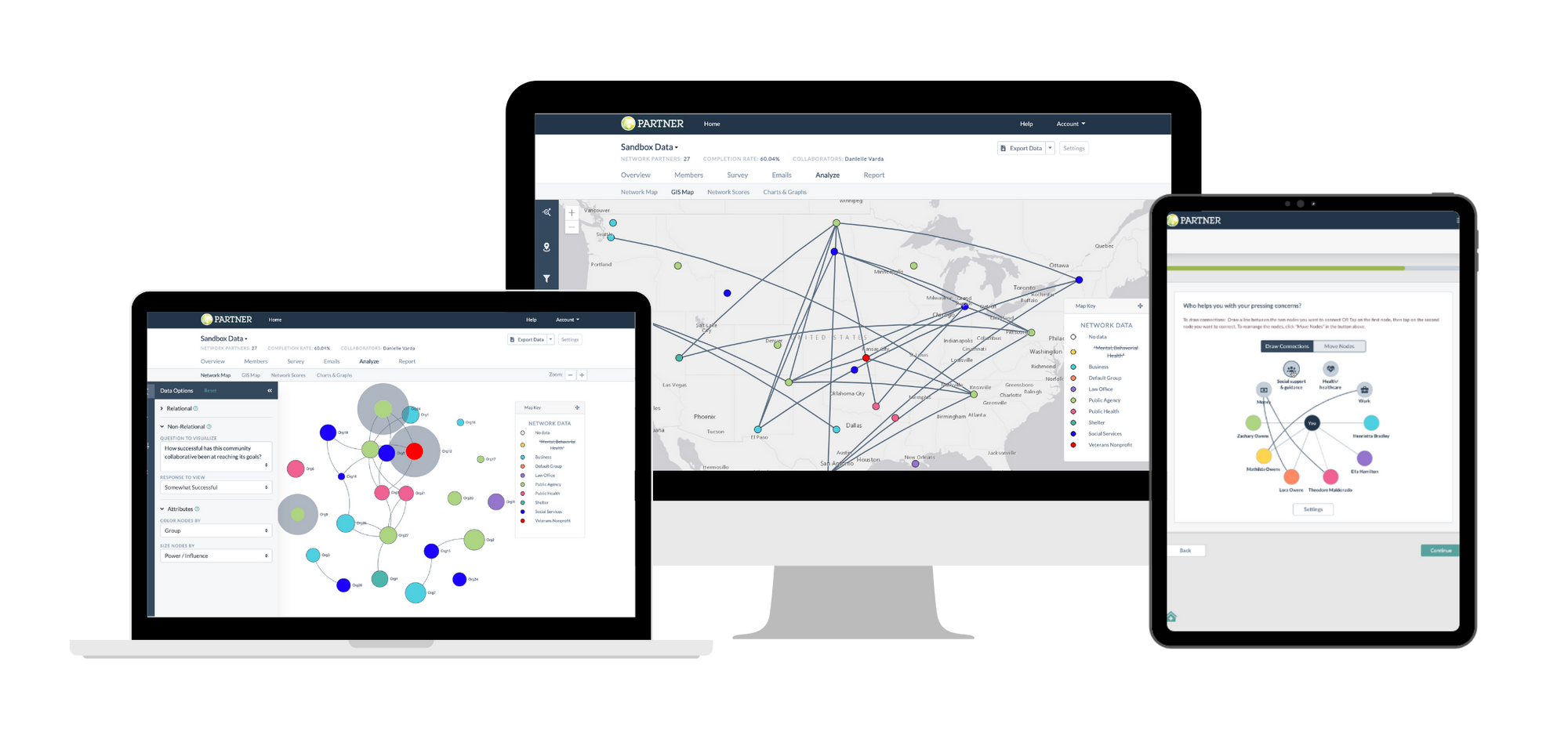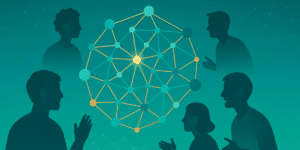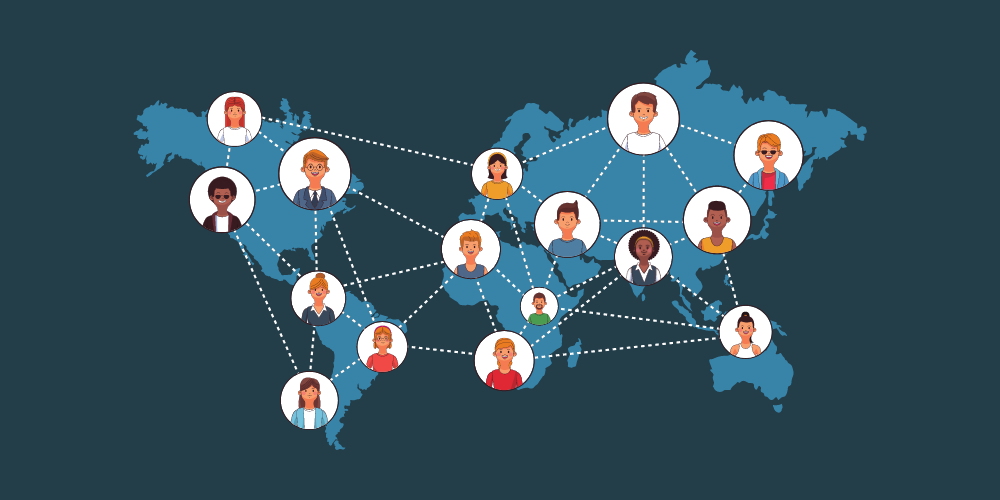
Social Network Analysis for Foundations: Six Ideas to Scale Impact
Social network analysis is a powerful tool to visualize systems and networks of partners in a particular community or issue area. It is increasingly being used in the philanthropic sector by foundations to improve the way they collaborate and leverage their network of partners, grantees, and internal teams.
In this article, I will introduce six ways foundations and funders can use social network analysis to strengthen their collective impact and create value.
What is Social Network Analysis? How Does it Work?
Social networks comprise the visible and invisible patterns of social relationships that underlie collective behavior among individuals, organizations, and other social entities. Social network analysis provides a set of tools for understanding these patterns of connections to leverage them to achieve goals effectively.
Social Network Analysis (SNA) is a process that uses network mapping to understand social structures. It investigates how people and organizations connect and collaborate through a network lens, in which nodes symbolize individuals, and connections between them are drawn as lines (known as ‘edges’).
SNA usually starts by surveying the network members to gather data about who is connected to whom and the quality of those connections. The data is then used to create maps of nodes and lines representing the network’s entities and connections between them. These maps can create significant insights into how the network is structured and the quality of its relationships.
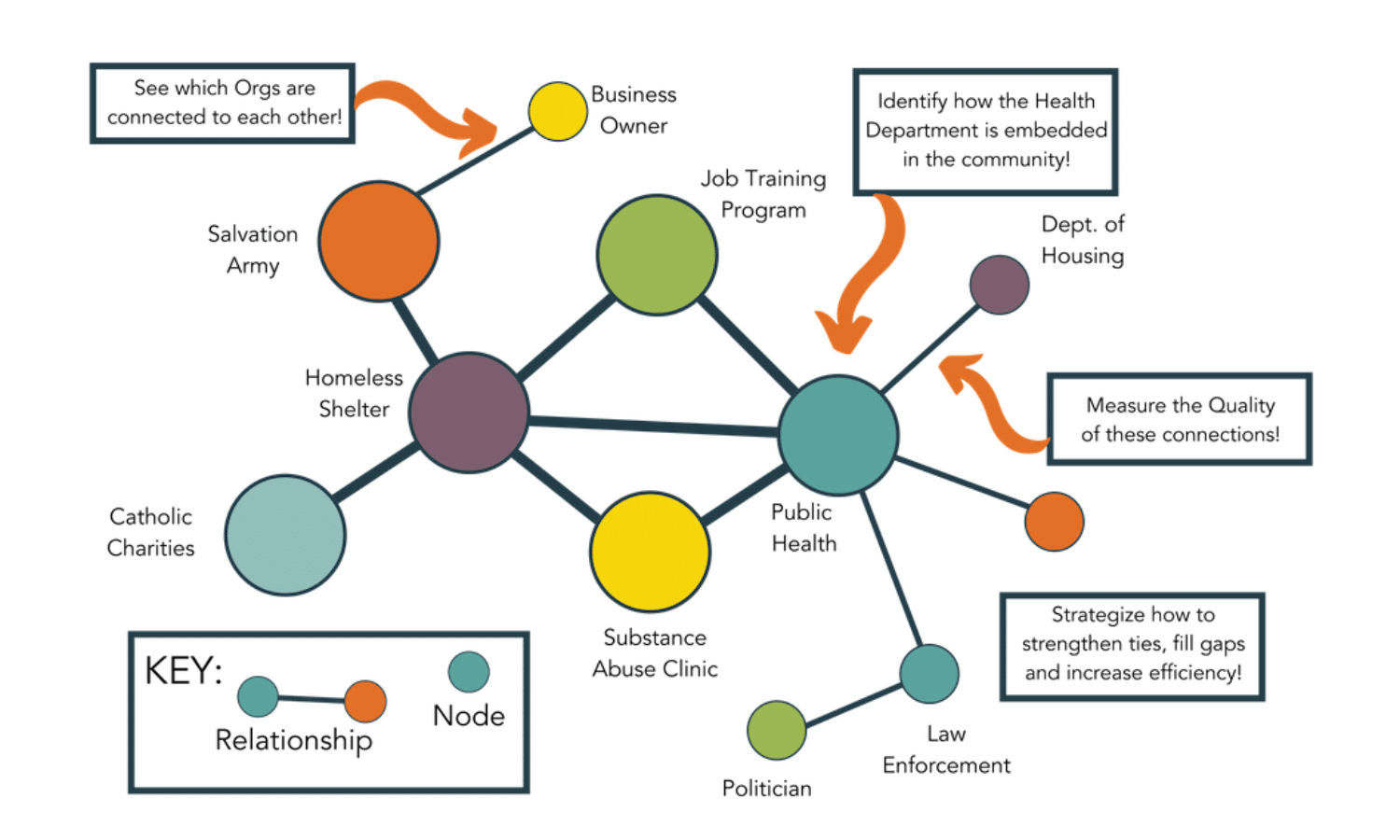
How Can Foundations Leverage Social Network Analysis?
Social Network Analysis is used by many different organizations for a variety of purposes. This is one of the benefits of SNA: It is flexible and adaptable to many different kinds of research and evaluation. Here are some of the main ways we see foundations and funders using social network analysis to inform their work and advance their impact.
1. Identifying Key Influencers and Stakeholders
SNA can identify which members of your network are the most well-connected and are perceived to be influential by other members. This is essential information for foundations who want to identify influential community members or organizations in their field of interest. Once you know the most influential stakeholders in your area of focus, you can reach out to build engagement with them and leverage their connections to the rest of the community. They are also powerful advocates if you can engage them directly in your cause.
SNA can identify key influencers in several different ways. For example, network analysis can help to identify those who are highly visible and may serve as key opinion leaders to improve adoption of a new practice. It may also identify those who may serve as gatekeepers that can help engage new groups in an effort and individuals who are uniquely positioned to disperse resources or information throughout a population.
We often find that beliefs about who is influential need to be corrected because they are based on faulty assumptions. SNA can help you second-guess your opinions and identify unlikely or unknown leaders in your community.
2. Assessing the Reach and Impact of Foundation-Supported Programs
Many foundation programs involve reaching out to the community to change behaviors or beliefs. Conducting a social network analysis of program participants can demonstrate how they are connected, whether the program is building further connections, and how they are sharing new knowledge and resources with one another. This can help the foundation prioritize its focus based on where its program’s reach is lagging.
For example, consider a foundation program that aims to share information about the social determinants of health with community non-profits. The foundation could use social network analysis to understand how the program reaches different organizations and who shares it.
3. Identifying Opportunities for Collaboration
When a foundation is launching a new program or working in a new community or topic, it may lack insight into the pre-existing collaboration and partnerships working in the same area of focus. Social network analysis reveals which organizations are already working with each other and where there are gaps. This provides a roadmap for integrating with the network and building new partnerships.
Consider a grantmaker that traditionally focused on food security and related issues but they are considering working to address housing insecurity as well. They could use social network analysis to identify who to connect with within their existing network, which is already well integrated with this new area of focus.
4. Evaluating Networks They Fund or Support
Often foundations and grantmakers directly fund or support a network focused on similar goals. This is often cited as the top need networks have from their philanthropic partners. Using SNA as a program evaluation tool can demonstrate the impact of their funding in several ways.
First, it can show which relationships and partnerships are attributable to their involvement. Second, they can describe how the network has changed how they work together, like sharing more resources or exchanging more information. Third, they can identify further opportunities to close network gaps, improve trust and value, and otherwise strengthen the network to scale their collective impact.
5. Facilitating Improved Communication and Information Sharing
Funders communicate with a large network of stakeholders, including grantees, community organizations, partners, government institutions, and their donors – just to name a few. Social network analysis can improve communication by mapping how information spreads across their network. A network map can identify bottlenecks, like key nodes that fail to share information and slow down the flow of information. By replacing or complementing these bottlenecks with more dependable ties, you can increase the efficiency of your communication efforts. You can also identify isolated partners who are not receiving information because of gaps in the network.
6. Strengthening the Foundation’s Internal Network
Foundations have their own internal network of staff, leadership, board of directors, donors, and volunteers. They can use social network analysis to visualize the connections within their organization between these various groups. This can provide many of the same benefits listed above but directly to the foundation. This includes improving communication between departments, donors, and leadership, identifying key players in the organization and opportunities for collaboration, and assessing the reach of their internal programs and messaging.
For example, a foundation analyzing its staff and donors might identify a few staff members who are especially well-connected or influential with their financial supporters. They can leverage their connection to strengthen ties with these donors or potentially even increase their support in the future.
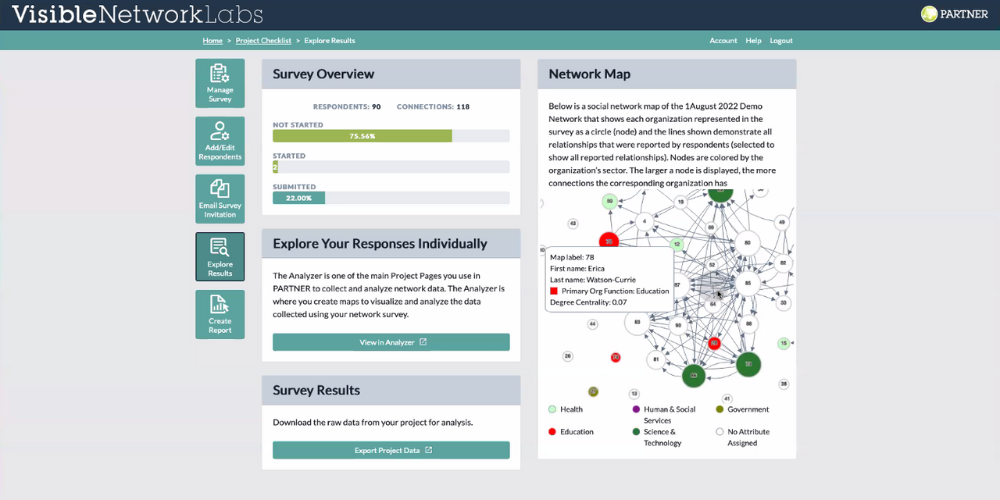
The Best Social Network Analysis Software for Foundations
There are many options for social network analysis software. However, most are designed for researchers and are challenging to use with a steep learning curve. Others meant for laypeople are oversimplified and don’t provide enough insight to be worth the time and effort. PARTNER is a social network analysis platform designed specifically for mapping and analyzing cross-sector partners and coalitions – just like the networks formed by foundations and funders. It is easy enough for practitioners to understand while still providing numerous metrics and data points to make it more than worth the effort. More than a dozen significant funders, including the Bill and Melinda Gates Foundation, Robert Wood Johnson Foundation, and Annie E. Casey Foundation, have used PARTNER for their work.
Social Network Analysis for Foundations: Now You Know
Social network analysis is a flexible methodology with many potential benefits for foundations and other funders. Whether you are actively funding and building networks, managing your own network of grantees and partners, or just looking to evaluate your internal organizational network, social network analysis can help inform and improve your strategy. To learn more about using social network analysis to improve your philanthropy, visit our website to see how we support foundations using our software and expertise. We look forward to connecting!
Additional Resources Related to Social Network Analysis for Foundations
Do you know of an article, guide or resources related to social network analysis for foundations? Leave a comment below at the bottom of the page with your recommendations and we will add them to our list of additional resources. We appreciate the opportunity to share these with our community of network leaders, funders, and evaluators.
Social Network Analysis: Identifying Relationships That Can Impact Success | Council on Foundations
This article discusses the potential benefits of social network analysis for philanthropic purposes and provides several helpful tools and resources for further reading and study.
Catalyzing Networks for Social Change | Jim Joseph Foundation
This Funder’s Guide includes several critical insights about leveraging networks to achieve more significant social impact.
How Funders Can Support and Leverage Networks for Social Impact | Rockefeller Foundation
This in-depth Guide walks you through the entire process of building and leveraging networks to scale impact, including some discussion of evaluation methods like social network analysis.
Social Network Analysis and Evaluation: Learnings From the Evaluator and the Client | Eval Academy
This case study demonstrates how Three Hives Consulting used PARTNER to evaluate a community development initiative and improve their work moving forward.
